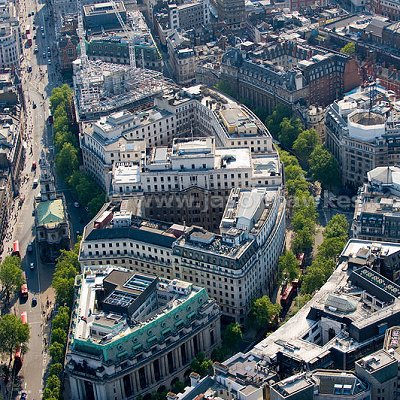
Like us on Facebook
PLACE NAMES


 
|
|
Aldwych
|

| |
Aldwych, the street, is a crescent, connected to the Strand at both ends. It forms part of the A4 route and carries traffic in a one-way eastbound direction. Streets adjoining Aldwych include Drury Lane, Kingsway, India Place and Melbourne Place. Notable buildings along its length include:
- Aldwych Theatre, opened in 1905.
- Novello Theatre, opened in 1905.
- India House, the High Commission of India in London.
- Australia House, the High Commission of Australia in London.
- The Waldorf Hilton, London, a hotel opened in 1908.
- The ME Hotel, designed by Richard Rogers.
- One Aldwych restaurant and bar.
- Bush House, King House, Melbourne House and Strand House - making up the Aldwych Quarter - formerly the office headquarters of the BBC World Service from 1941 to 2012 and now part of the Strand Campus of King's College London.
- Connaught House, Columbia House, Aldwych House, and Clement House, buildings of the London School of Economics.
Former buildings include:
- Gaiety Theatre, opened in 1864 and closed in 1939
- Television House, the former headquarters of ITN
Facing Aldwych, on the Strand, is the closed Aldwych tube station, which was originally named Strand station. Aldwych station was closed in 1994 but has since been used for filming scenes in a number of films and television shows.
In the seventh century, an Anglo-Saxon village and trading centre named Lundenwic ('London trading town') was established approximately one mile to the west of Londinium in what is now Aldwych. At the time, the Strand was the Thames waterfront and Aldwych was a convenient inlet for shipping. Lundenwic probably also used the mouth of the River Fleet (just to the east) as a harbour or anchorage for trading ships and fishing boats. After Alfred the Great re-built the London fortifications in the late 9th century, the old site of Londinium became known as Lundenburh, and Lundenwic was mostly abandoned and became known as Ealdwic (meaning 'old trading town' or 'old marketplace'). The name was recorded as Aldewich in 1211.
Lundenwic was "rediscovered" in the 1980s after the results of extensive excavations were reinterpreted as being urban in character. These conclusions were reached independently by the archaeologists Alan Vince and Martin Biddle. Recent excavations in the Covent Garden area have uncovered an extensive Anglo-Saxon settlement, covering about 600,000 square metres (150 acres), stretching from the present-day National Gallery site in the west, to Aldwych in the east. As the presumed locus of the city, Lundenburh, was moved back within the old Roman walls, the older settlement of Lundenwic gained the name of ealdwic, 'old settlement', a name which evolved into Aldwych.
The modern street was created in a redevelopment in the early 20th century that saw the demolition of the old Wych Street and the construction of Australia House (built 1913–18) and Bush House (completed 1925). A statue of the 19th-century prime minister William Ewart Gladstone was installed in 1905 near St Clement Danes church, at the eastern end of Aldwych.
In 1906, Aldwych tramway station was opened underneath Kingsway; it closed in 1952. In 1907, Aldwych tube station was opened on the Strand opposite Aldwych; it closed in 1994.
|
 Feel free to Email me any additions or corrections Feel free to Email me any additions or corrections
LINKS AVAILABLE TO YOUR SITE
| |





